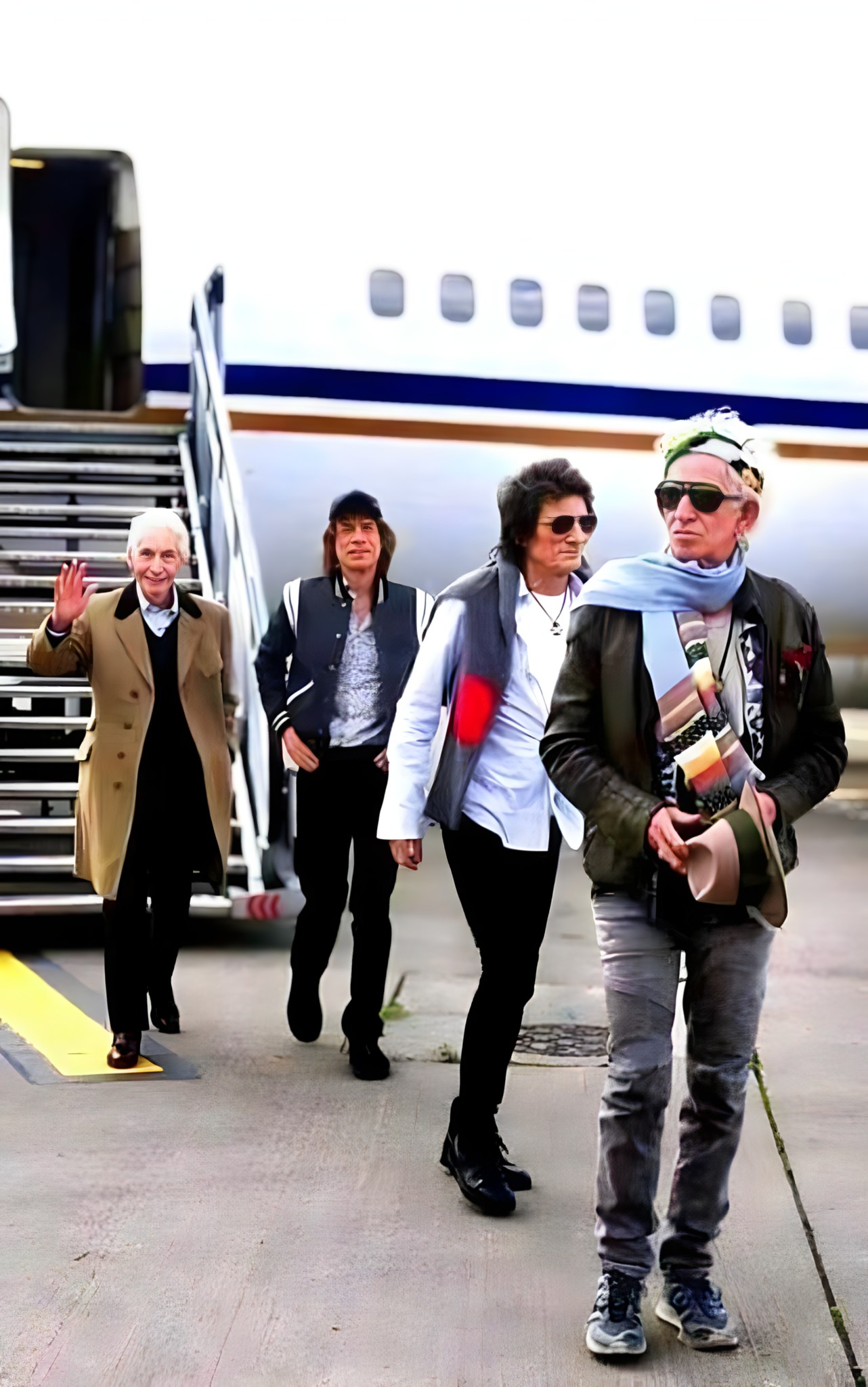🌍 The Rolling Stones’ Legendary World Tours – From Steel Wheels to Bridges to Babylon
Few bands in the history of rock have ever defined the spirit of the road quite like The Rolling Stones. For them, touring was not just a way to promote albums—it was the arena where their legend was built, reshaped, and expanded across decades. Among the countless tours that cemented their myth, two stand tall as monuments of endurance, reinvention, and sheer spectacle: the Steel Wheels Tour (1989–1990) and the Bridges to Babylon Tour (1997–1998). These global journeys weren’t just about music—they were about survival, friendship, rivalry, and the unstoppable force of a band that refused to fade away.

🎸 The End of an Era, the Start of a Revival – Steel Wheels
By the late 1980s, many thought the Stones were finished. Mick Jagger and Keith Richards had fallen into one of their darkest periods of tension, a creative and personal feud that nearly tore the band apart. Jagger had flirted with solo stardom, Richards was consumed with proving his independence, and the press declared that The Rolling Stones’ era of dominance was over.
Then came Steel Wheels. Not only was it a new studio album—it was a resurrection. The band reunited, reconciled (at least temporarily), and announced a massive world tour, their first in seven years. When the Steel Wheels Tour kicked off in 1989, fans and critics alike were stunned.
The shows were bigger, louder, and grander than anything the Stones had ever attempted. The stage design featured colossal steel structures, flames, and giant screens—a blueprint for the stadium rock tours that would follow for decades. From Toronto to Tokyo, New York to London, they proved they could still command stadiums with an energy that rivaled bands half their age.
More than just a comeback, the Steel Wheels Tour set the standard for mega-tours. It became a cultural phenomenon, one of the highest-grossing tours of its era, and reestablished the Stones as the greatest rock and roll band in the world.
🌐 Bridges, Babylon, and the Late-90s Reinvention
If Steel Wheels was about proving they could still do it, Bridges to Babylon was about showing they could evolve. By 1997, the Stones were pushing past fifty, in an era when grunge and hip-hop ruled the charts. Yet instead of retreating into nostalgia, they leaned into reinvention.
The Bridges to Babylon Tour became one of the most ambitious and adventurous in their history. The stage was a marvel of late-90s engineering: a futuristic design with a massive “bridge” that extended into the crowd, allowing the band to connect with fans in intimate ways even inside stadiums. The setlists mixed classics with daring inclusions from the new album, and every night felt like a balance of heritage and risk.
One of the most remarkable aspects of this tour was its global reach. The Stones brought their show to cities that had rarely seen rock tours of such magnitude, from South America to Eastern Europe. In Buenos Aires, fans sang every word back with such ferocity that Jagger later admitted it was one of the loudest, most passionate audiences the band ever faced.
The tour’s legacy also lived in its willingness to embrace technology. It was one of the first major tours where the Stones experimented with live internet broadcasts, bridging rock’s golden past with the digital future.
🎤 The Stories Behind the Stage
What made these tours legendary wasn’t just the music—it was the stories whispered behind the curtain.
There were nights when Jagger’s voice nearly gave out, only for Richards to step in and carry entire sets. There were after-show parties that spiraled into chaotic celebrations, and mornings where exhaustion pushed the band to its limit. There were fights—always—but also moments of tenderness, as when Charlie Watts quietly steadied the band with his calm presence while the others bickered.
Perhaps most tellingly, these tours revealed the Stones’ paradox: a band on the edge of collapse, yet capable of coming together on stage with unmatched chemistry. The tension between Jagger and Richards, far from breaking them, fueled performances that crackled with energy.
🕰 Why These Tours Still Matter
Today, when we look back at the Steel Wheels and Bridges to Babylon tours, we see more than concerts—we see survival. These were the tours that proved The Rolling Stones could outlast generations of trends, that age was just a number, and that rock and roll could still command the world stage.
Without Steel Wheels, there might not have been a 21st-century Stones. Without Bridges to Babylon, they might have slid into nostalgia instead of reinvention. Together, these tours became testaments to the band’s philosophy: never stop moving, never stop playing, and never stop surprising the world.
And perhaps that’s the greatest legacy of all.